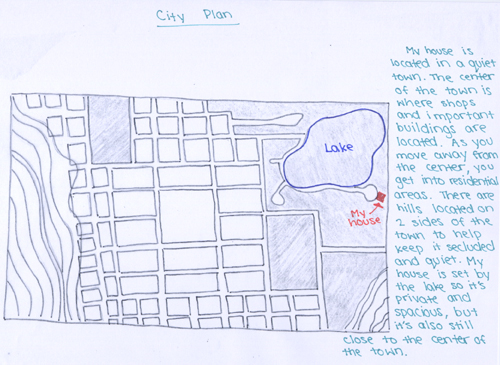Week eight of the Saturday High Architecture class at Art Center College of Design: we leap into master planning. Enticing each one of the students to think of their project from a new point of view, as an integral component of a larger system/a neighborhood/a community is what I aim for.
Albert Einstein said: "We can't solve problems by using the same kind of thinking we used when we created them." So what problems are we anticipating to solve and what should be different in our thinking? I don't pretend to have an answer, but maybe my students will. We start by developing a mind map of cooperative relationships from a perspective of FOSTERING GROWTH:
•Suspending judgment: awareness-instinct-inspiration-innovation-commitment to authenticity
•Tolerating ambiguity: patience-creativity-goals-ideals-keeping an open mind
•Approaching every day as an adventure: exploration-discovery-evolution-allowing for experimentation-"persuasiveness of the mind"
•Thriving within boundaries: immersion-community-support system-cooperation-cultivating a sense of belonging
Several writings attributed to Hippodamus (or Hippodamos) of Miletus (c. 498- c. 408 BC), an ancient Greek architect, physician, mathematician, meteorologist, and philosopher, express the idea that a town plan might formally embody and clarify a rational social order and deal with issues of the state. Hippodamus, the inventor of formal city planning, conceives of fostering growth by designing a rigid framework of intersecting streets that form quadrilateral city blocks in advance.
Most visionary and impressive in his plan is the agora, a wide central area, which is to be kept unsettled. He predicts that in time it will evolve into the center of both the city and the society. Representing a new way of democratic life, the agora is expected to hold its ground while relating to important civic structures within dense urban fabric.
Hippodamus does not dictate the final outcome; he simply visualizes a way of thriving within boundaries. He proposes a workable approach to manipulating vast open space with a set of guidelines. He eases the task of starting anew every time by facilitating a certain place of departure and defining a path.

Plan of Ancient Greek City of Miletus, sketch by Miller Yee Fong, Architect

Plan of the neighborhood by Samantha
Exact and predictable regularity of the city block is what ancient Miletus and modern Manhattan have in common. Yes, the predictable grid of midtown Manhattan serves as a good example of how fixed parameters provide a starting point for getting the most out of available space. For us, it is a lesson in suspending judgment, thinking big and small at the same time while separating trivial from important and persuasively untangling a web of interrelated obstacles.
As we talk about fostering growth through commitment to authenticity, the plan of Versailles comes to mind. This most massive, yet controlled park of the 17th century is designed and constructed by André Le Nôtre, a French landscape architect and the principal gardener of King Louis XIV of France. At Versailles, Le Notre utilizes his standard plan of a central axis with the palace as the focal point to transform the harsh landscape of the original hunting lodge. The process of shaping unhealthy, swampy site, which has no view and almost no water takes Le Nôtre 33 years, hundreds of workers and thousands of hours to complete.
I encourage my students to imagine this enormous undertaking, to wonder what it must be like to endure and tolerate ambiguity of an ever-lasting design pursuit. I say: "That discussion we had about being prepared for success to arrive in stages is beginning to make more sense, doesn't it?"
I want them to be as intrigued as I am by the concept of approaching every day as an adventure. At Versailles, Le Nôtre thinks big and small while overcoming inherent limitations: the forest is manipulated and crafted into a magnificent garden where every aspect is controlled and carefully manicured, where the trees are cut to focus on the palace, where the sculpted terraces emphasize the intricate design of the palace façade, and where the fountains tie all elements together to create a perfect composition.
Conversely, inspired by Versailles, we can endeavor to allow for experimentation while anticipating and transcending challenges--whatever they are. I am confident that my students will have no trouble relating this information to their own projects. I can almost feel their anxiety and excitement of immersion with every bit of knowledge presenting new discoveries and surprises that in turn unravel new questions.
Perhaps making them feel energized each step of the way is the type of impact I strive for? Just like Le Nôtre, they can allow for experimentation while making headway. Just like Hippodamus, they can devise a framework that turns familiar and tired into something authentic. They can foster growth by sifting through issues as they arise, applying the kind of thinking Einstein is calling for.
